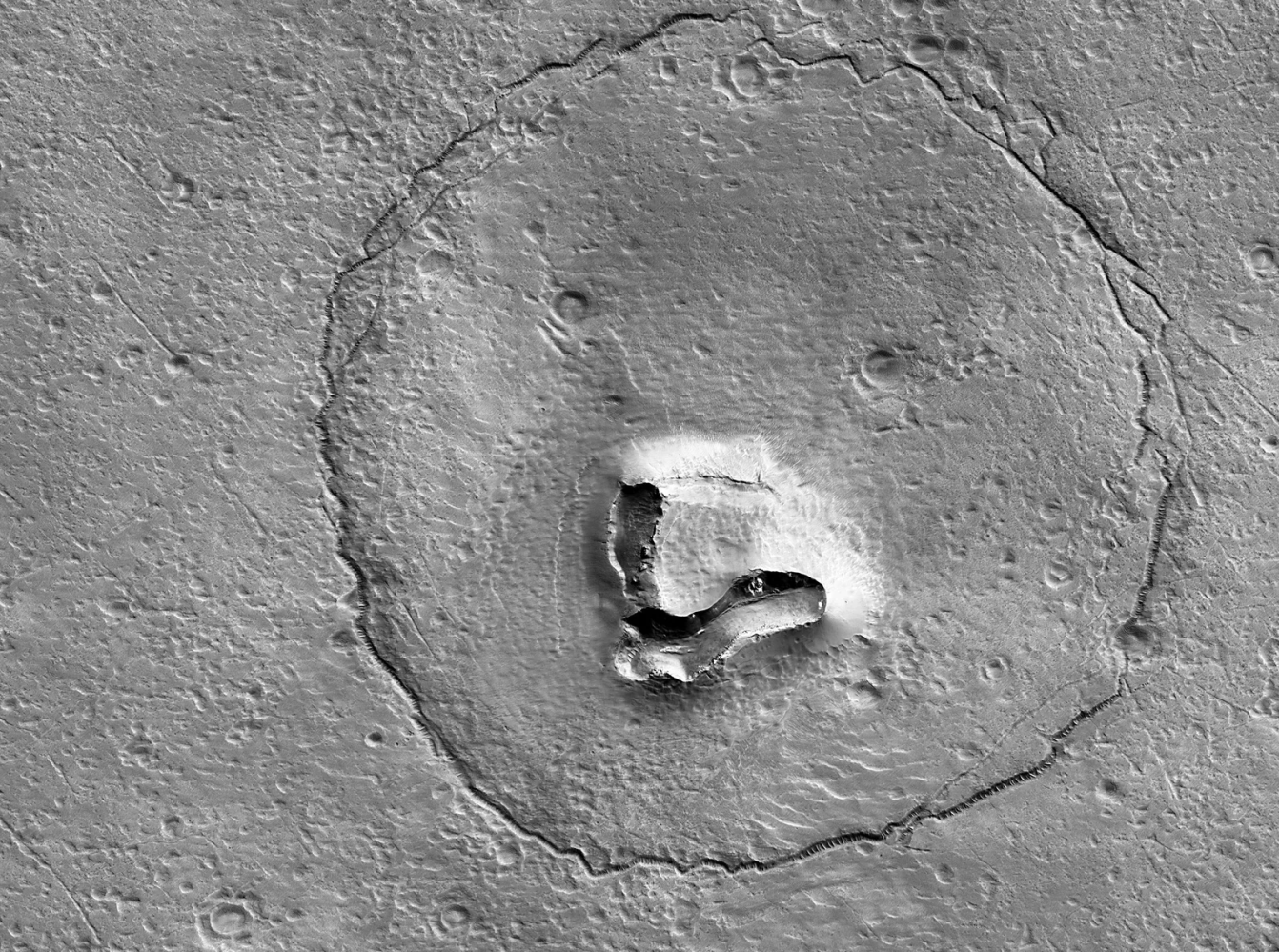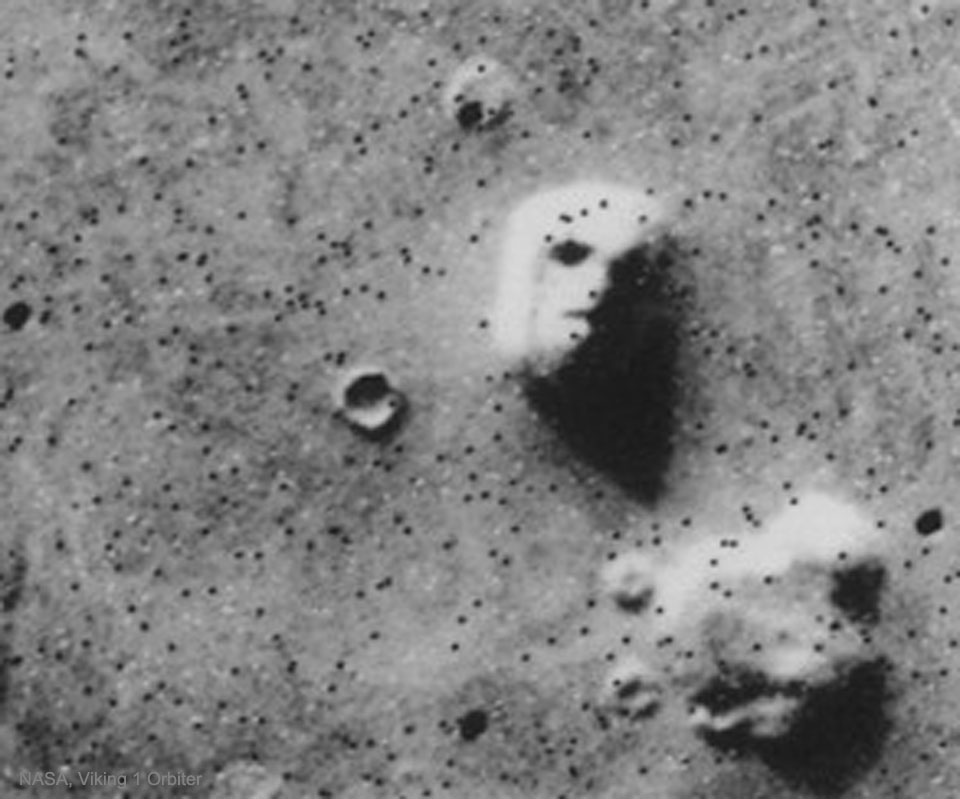
NASA’s newest discovery might just be the most adorable yet. Last month, the space agency’s Mars Reconnaissance Orbiter captured what can only be the face of a bear carved into the red planet’s ancient landscape.
The image was taken on Dec. 12 from the Mars Reconnaissance Orbiter’s HiRISE camera that’s been snapping photos of the red planet since 2006 from approximately 380 km (298 miles) above the surface.
The University of Arizona, which operates the camera, shared the image in a tweet with a report breaking down how exactly the bear was formed.
The eyes of the feature are two impact craters. The “V-shaped collapse structure” resembling a snout is a hill. And the circular facial pattern that outlines the head “might be due to the settling of a deposit over a buried impact crater,” the University of Arizona’s Lunar and Planetary Laboratory says. “Maybe the nose is a volcanic or mud vent, and the deposit could be lava or mud flows?”
This isn’t the first time scientists have seen images with an eerie resemblance to things on Earth. In 1976, NASA’s Viking I spacecraft, the first to successfully travel to and land on Mars, spotted a face. This turned out to be an eye trick that happens when light hits the mesa at a certain angle.

A better example, also captured by Viking early in its mission, is the crater, Galle. Its happy face was first noticed in synoptic observations created by the curved mountain range in the southern part of the crater and two smaller separate mountain clusters that make up the eyes. The Universe works in mysterious ways, I guess…


You can follow Arin on Twitter and Mastodon
More Mars-related stories:
- List of all active robots on and around Mars
- NASA’s Insight lander captures sound of meteorites hitting Mars
- Perseverance rover finds organic matter in rock samples on Mars
FTC: We use income earning auto affiliate links. More.





Comments